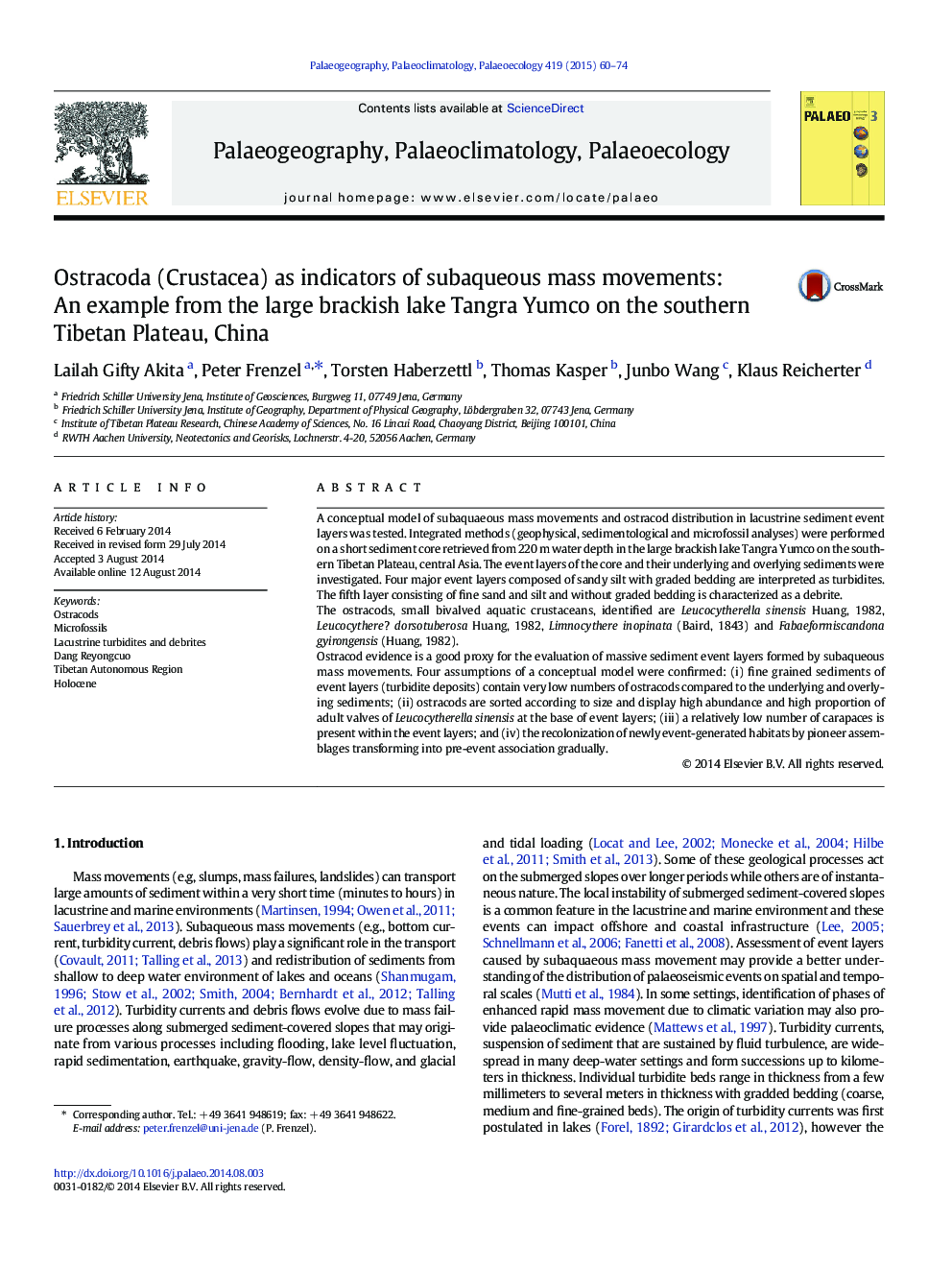| کد مقاله | کد نشریه | سال انتشار | مقاله انگلیسی | نسخه تمام متن |
|---|---|---|---|---|
| 4466078 | 1622171 | 2015 | 15 صفحه PDF | دانلود رایگان |

• New model of ostracod distribution patterns in lacustrine turbidite layers
• Micropalaeontological tool for identifying turbidite layers in large lakes
• Documentation of event layers in cores from a remote region on the Tibetan Plateau
• Ostracod data from a large brackish high altitude lake
A conceptual model of subaquaeous mass movements and ostracod distribution in lacustrine sediment event layers was tested. Integrated methods (geophysical, sedimentological and microfossil analyses) were performed on a short sediment core retrieved from 220 m water depth in the large brackish lake Tangra Yumco on the southern Tibetan Plateau, central Asia. The event layers of the core and their underlying and overlying sediments were investigated. Four major event layers composed of sandy silt with graded bedding are interpreted as turbidites. The fifth layer consisting of fine sand and silt and without graded bedding is characterized as a debrite.The ostracods, small bivalved aquatic crustaceans, identified are Leucocytherella sinensis Huang, 1982, Leucocythere? dorsotuberosa Huang, 1982, Limnocythere inopinata (Baird, 1843) and Fabaeformiscandona gyirongensis (Huang, 1982).Ostracod evidence is a good proxy for the evaluation of massive sediment event layers formed by subaqueous mass movements. Four assumptions of a conceptual model were confirmed: (i) fine grained sediments of event layers (turbidite deposits) contain very low numbers of ostracods compared to the underlying and overlying sediments; (ii) ostracods are sorted according to size and display high abundance and high proportion of adult valves of Leucocytherella sinensis at the base of event layers; (iii) a relatively low number of carapaces is present within the event layers; and (iv) the recolonization of newly event-generated habitats by pioneer assemblages transforming into pre-event association gradually.
Figure optionsDownload high-quality image (308 K)Download as PowerPoint slide
Journal: Palaeogeography, Palaeoclimatology, Palaeoecology - Volume 419, 1 February 2015, Pages 60–74